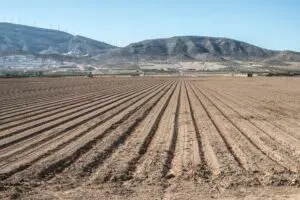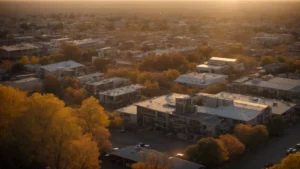Your home’s foundation is its bedrock – the critical element that supports the entire structure, ensuring its stability and longevity. Yet, beneath the surface, a silent threat can emerge: foundation settlement, or a “sinking foundation.” This isn’t just an aesthetic issue; it can lead to severe structural damage, impacting everything from your home’s safety to its market value. In a state like Utah, with its diverse geology and susceptibility to seismic activity and expansive soils, understanding and addressing foundation issues is paramount.
At Anderson Engineering, we regularly help homeowners and commercial property owners in Utah navigate these complex challenges. As structural engineering experts, we understand the unique soil conditions and environmental factors that contribute to foundation problems in our region. This blog post will equip you with the knowledge to identify the warning signs of a sinking foundation and explore the effective engineering solutions available to restore your property’s stability.
The Forces at Play: Why Foundations Sink in Utah
Foundation settlement occurs when the soil beneath a structure can no longer adequately support its weight, leading to downward movement. In Utah, several factors contribute to this phenomenon:
1. Expansive Clay Soils: Much of Utah, particularly in the valleys and along the Wasatch Front, is characterized by highly expansive clay soils. These soils contain minerals that absorb water and swell significantly when wet (e.g., during heavy rainfall or snowmelt) and then shrink dramatically when dry (during periods of drought). This constant cycle of expansion and contraction creates immense pressure and voids beneath the foundation, leading to uneven settlement, cracking, and even “heaving” (upward movement).
2. Poorly Compacted Fill Soils: Many homes and commercial buildings in Utah are constructed on “fill” – soil brought in from another location to level a site. If this fill material is not properly compacted before construction, it can settle and compress unevenly under the weight of the structure over time. This is a common culprit for differential settlement, where one part of the foundation sinks more than another.
3. Changes in Soil Moisture Content: Beyond expansive clays, any significant change in soil moisture can impact foundation stability.
- Excessive Moisture: Poor drainage around a foundation (e.g., clogged gutters, improper grading), plumbing leaks, or even a rising water table can saturate soils, reducing their load-bearing capacity and causing settlement.
- Drought Conditions: Prolonged dry spells cause soils to dehydrate and shrink, creating voids that the foundation can then settle into. Large trees or shrubs planted too close to a foundation can also draw out significant moisture, contributing to this issue.
4. Geological Hazards and Seismic Activity: Utah is known for its active geology, including the Wasatch Fault. While major earthquakes are less frequent, even minor seismic events or constant ground vibration can cause soils to shift and settle, potentially impacting foundation integrity. Additionally, areas with unmitigated collapsible soils (which are stable when dry but collapse when saturated) or proximity to landslides can present specific risks. The Utah Geological Survey provides valuable resources on local geologic hazards.
5. Poor Construction Practices: In some unfortunate cases, foundation issues stem from inadequate design or construction practices, such as insufficient footing depth, improper rebar placement, or building on unsuitable soil without proper mitigation.
The Silent Alarms: Recognizing the Warning Signs of a Sinking Foundation
The insidious nature of a sinking foundation often means that signs appear gradually. Early detection is key to preventing extensive and costly damage. Be vigilant for these common indicators:
Inside Your Home
- Cracks in Walls: Look for diagonal “stair-step” cracks in brick or concrete block walls, especially those wider than a quarter-inch. Cracks can also appear in drywall, particularly around door and window frames, or along seams. Horizontal cracks in basement walls are a red flag, often indicating inward pressure from outside soil.
- Sticking Doors and Windows: As a foundation settles, door and window frames can become distorted and out of square. This leads to doors that jam, don’t latch properly, or have uneven gaps around the frame. Windows may become difficult to open or close, or you might notice new gaps around their exterior.
- Uneven or Sloping Floors: This is a classic sign. If you feel like you’re walking uphill or downhill in certain areas of your home, or if objects roll on their own, it suggests uneven settlement. Sagging floors can also indicate issues with crawl space supports.
- Gaps: Gaps appearing between walls and ceilings, or between walls and floors, are strong indicators of structural movement.
- Visible Movement: You might notice cabinets separating from walls or countertops pulling away from backsplashes.
Outside Your Home
- Cracks in the Foundation Itself: Visible cracks on the exterior foundation walls, particularly horizontal or stair-step cracks, are direct evidence of movement. Look for cracks wider than 1/4 inch.
- Cracked or Leaning Chimney: If your chimney is separating from the rest of the house or noticeably tilting, it’s a serious sign of localized foundation settlement due to its heavy weight.
- Cracks in Exterior Brickwork or Siding: Similar to interior walls, cracks in the exterior finish of your home, especially stair-stepping cracks in brick mortar, often signal underlying foundation issues.
- Pooling Water Near the Foundation: This isn’t a sign of settlement itself, but it’s a major contributor. Poor drainage allows water to saturate soils, weakening them and increasing the likelihood of future settlement.
- Gaps Around Exterior Windows and Doors: Similar to interior signs, gaps between window or door frames and the exterior siding can indicate that the framing is shifting due to foundation movement.
Engineering the Solution: Restoring Foundation Stability
Once warning signs are detected, a professional assessment by a qualified structural engineer is crucial. At Anderson Engineering, we conduct thorough investigations to determine the root cause and extent of the damage, allowing us to design a tailored and effective repair strategy. Common engineering solutions for sinking foundations in Utah include:
1. Helical Piers: Often considered one of the most reliable and long-lasting solutions, helical piers are large steel shafts with helical (screw-like) plates. They are mechanically screwed deep into the ground, bypassing unstable soil layers until they reach stable, load-bearing strata (often bedrock or dense soil). The weight of the structure is then transferred to these stable piers, effectively stabilizing and, in some cases, lifting the foundation back to its original position. Helical piers are excellent for their minimal disruption during installation and their ability to be installed in various soil types.
2. Push Piers (Steel Piers): Similar to helical piers, push piers are driven hydraulically into the ground until they hit bedrock or competent soil. The structure’s weight then uses a hydraulic ram to push the piers, transferring the load to the deeper, more stable soil. This method is effective for heavier structures and can be used to lift settled foundations.
3. Polyurethane Foam Injection (Slab Lifting/Leveling): For concrete slabs (common in many Utah homes and commercial properties), a specialized polyurethane foam can be injected beneath the slab. As the foam expands, it compacts the soil and lifts the concrete, leveling it and filling any voids. This method is relatively fast, minimally invasive, and provides excellent support. It’s often used for sunken driveways, patios, and garage floors.
4. Soil Stabilization: In some cases, the issue might be addressed by improving the soil’s load-bearing capacity directly. This can involve injecting various chemical grouts or polymers into the soil to densify it and prevent further movement. This approach is highly effective for specific soil types, like collapsible soils, found in parts of Utah.
5. Drainage Improvement: While not a direct “foundation repair” in the same vein as piering, proper drainage is a critical component of any long-term solution. Redirecting water away from the foundation through grading, French drains, and properly functioning gutters and downspouts is essential to prevent future moisture-related soil issues.
6. Concrete Repair and Reinforcement: Once the foundation is stabilized, a structural engineer can design appropriate repairs for any damaged concrete, including crack injection, carbon fiber reinforcement, or concrete patching, to restore the foundation’s integrity.
The Anderson Engineering Difference: Your Partner in Foundation Stability
At Anderson Engineering, we don’t just identify problems; we engineer robust, long-term solutions. Our team of licensed Professional Structural Engineers (SE) and Professional Land Surveyors (PLS) brings decades of experience to every project in Utah. We combine in-depth knowledge of Utah’s unique geological conditions and building codes with cutting-edge technology and a principal-led approach. This means you get direct access to experienced engineers who oversee your project from initial assessment to final design and oversight.
We are committed to providing:
- Precise Diagnostics: Thorough investigation to pinpoint the exact cause and extent of foundation issues.
- Tailored Solutions: Custom-engineered designs that address your specific property’s needs and soil conditions.
- Code Compliance: Ensuring all repairs meet Utah’s strict building codes and safety standards, including seismic considerations.
- Seamless Process: From initial consultation and design to permitting support and construction oversight, we streamline the process.
Ignoring the warning signs of a sinking foundation is a gamble that can lead to significant financial strain and compromise the safety of your property. Proactive assessment and expert engineering solutions are the best defense.
Is Your Foundation Trying to Tell You Something?
If you’ve noticed any of the warning signs discussed above, don’t delay. The sooner foundation issues are addressed, the less extensive and costly the repairs are likely to be. Take the first step towards a stable, secure future for your property.
Contact Anderson Engineering today for a comprehensive foundation assessment and engineered solution. Let us provide the peace of mind that comes with building on solid ground.




